The SKTCHD AWRDS: The Comics of the Decade
The SKTCHD AWRDS concluded with a week long run-through of my 25 favorite comics of the decade, and to wrap everything up, I wanted to collect every entry into one gigantic post. It’s nearly 10,000 words on the comics that most defined my decade of reading comics, highlighting the best titles I read, the ones I enjoyed the most, the ones that remain most present in my memory, and much more.
Naturally, there was method to this madness. Here’s the methodology that guided me:
- This only features comics that were published between the years of 2010 and 2019
- If a comic was originally published in another language, I’m using that version’s original release date as my date of determination
- Reprints do not count in any way – this has to be an original comic, unless it’s the first version that is widely available
- I considered comics of all varieties – single issues, arcs, graphic novels, webcomics, kids comics, adult comics, etc. etc.
- I tried to read as many comics as I could, but as a one person show, I could only do my best. This list is criminally empty of manga. It’s a weakness, I know.
That’s it. Let’s get to my favorite comics of the decade to conclude the SKTCHD AWRDS, and as a note, this is open to non-subscribers!

The Brenden Fletcher Award: The Abominable Charles Christopher
Written and drawn by Karl Kerschl
This award might seem particularly strange. Why would I name the award for a webcomic by cartoonist Karl Kerschl after his Isola and Gotham Academy collaborator Brenden Fletcher? Seems odd, and yeah, I’ll admit it, it is sort of weird.
But when I think of The Abominable Charles Christopher, one of the first things I think of is Fletcher because whenever I see Karl at cons, I also see Brenden, and the writer sometimes jokes about how I’m going to fanboy out because he knows how much I love Charles Christopher. And you know what? Brenden is right, both in poking fun at my Chris Farley Show nature and in how much I love this comic. It’s one of my favorite comics ever, as this webcomic that is largely about a quiet yeti finding his way in the world while trying to care for those around him – but often diverges into varying tangents, including stories of a very important Moon Bear and assorted woodland creatures in the vicinity of the titular character – is at times hilarious, most of the times poignant, but always remarkably crafted and engrossing.
While it’s a webcomic, it’s actually told as a pretty classic styled comic strip, with the average entry being delivered as a strip of the traditional one to three panel length or a more Sunday-like length with two columns of a higher number of panels. That leads to something that both works as a serialized story but also one with impactful smaller beats. It’s an incredibly versatile format, and one that Kerschl really uses to his advantage. (It also means the comic is very sharable as well as something that works well as prints for personal use. I have two framed, and I intend to get a third as well)
The Abominable Charles Christopher’s rate of release has diminished greatly as other projects have taken priority over it. That’s totally fair, and even if it doesn’t complete, I’d be fine with it. Ultimately, you could say one of the themes of the story is that it isn’t the result that defines your journey, but the impact we have upon the world during it that matters. If we never get to the end, then I’ll just be thankful for the impact this comic has had on me, even if Brenden Fletcher still sasses me for my endless fanboying of Karl’s work. Whatever Brenden! I like what I like! 1
You can read all of The Abominable Charles Christopher on the comic’s site right now, for free (or you can buy the collections). Go and do that. Seriously. Right now.

The Pixar Award: Amulet
Written and drawn by Kazu Kibuishi
Art assists by Jason Caffoe
While Raina Telgemeier and Dav Pilkey may have defined the decade for young readers comics, Kazu Kibuishi’s sprawling epic fantasy series Amulet is, in my opinion, the finest work on that side of the comics world from the ’10s. 2 In fact, and perhaps obviously given what the exercise I’m engaging with here, Amulet is one of the best comic series of this century of any variety in my book, as its first two chapters were in 2008 and 2009. Each chapter has been incredibly well-crafted, as Kibuishi’s one of the finest artistic talents we have in the medium, and he’s managed to create a story with real emotion, tension and imagination to it.
I’m giving this one the Pixar Award because Amulet is the best comic at accomplishing what the vaunted animation house did for a long time – creating stories that work equally well for all ages of readers – since Jeff Smith’s Bone, with this title being the heir apparent to Smith’s legacy. Each chapter has managed to up the character count and the amount of plot to cover, but we’ve never lost touch of the heart of this book or lacked in any feel for the characters, a rare balance in a series as long as this one. And Kibuishi’s art has never suffered despite complications rising and its run expanding. Each massive spread is staggeringly gorgeous, each character featured is fully alive, and the acting within is spot on, page after page.
It’s a flagship series for Scholastic Graphix for good reason: it isn’t just a great kids comic, but a great comic of any variety, and a one man highlight reel for Kibuishi’s hall of fame level talent.
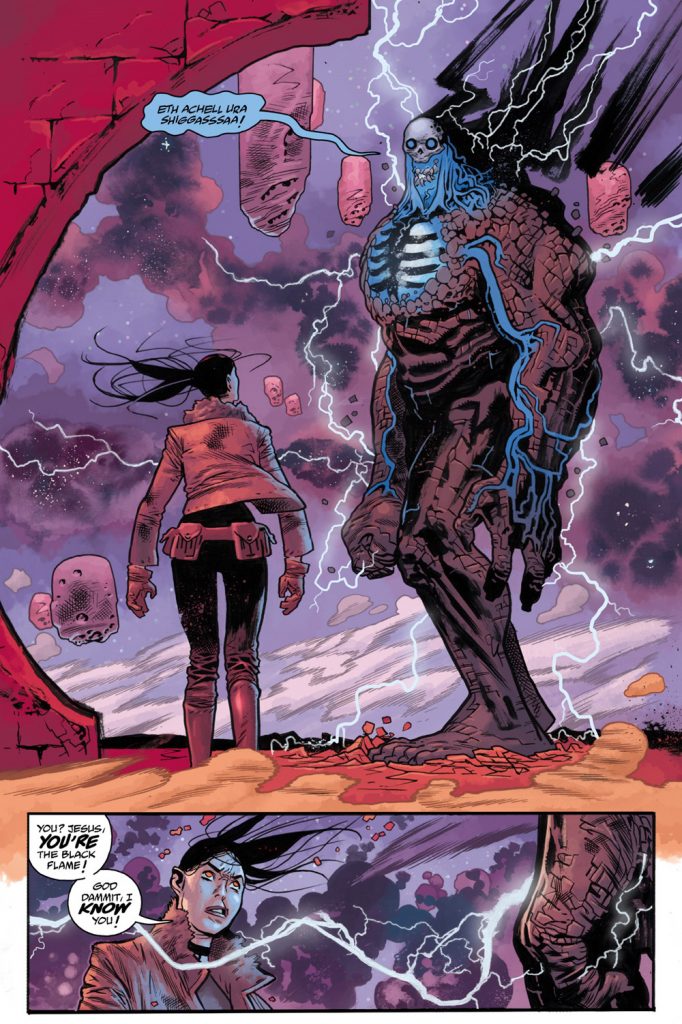
The End of the World Award: B.P.R.D.
Written by Mike Mignola, John Arcudi, Scott Allie, etc.
Line art by Guy Davis, James Harren, Tyler Crook, Laurence Campbell, etc. etc.
Colors by Dave Stewart
Lettering by Clem Robins
This is a fascinating inclusion for one reason: you could make a strong case for this being B.P.R.D.’s weakest decade. While this Hellboy spin-off was still strong for much of the decade, its first one was almost all John Arcudi co-writing and Guy Davis on art, which, needless to say, was a pretty good time to be a fan of the Bureau.
But this one was still stellar, especially before Arcudi departed, as we were given the end of the first phase of the first B.P.R.D. cycle – Plague of Frogs – all the way to the title’s conclusion. And a big part of that comes from the art, as this title featured some of the finest art in the medium, from some exemplary work from Davis and a brief run as the headliner for Tyler Crook to James Harren’s rise as the art god in waiting after Davis left and Gabriel Ba and Fabio Moon’s endlessly impressive efforts with their boy Anders. That’s barely scratching the surface, too, as Lauren Campbell, Duncan Fegredo, Mike Norton, Julian Totino Tedesco (!!), and more delivered brilliant art throughout.
While its ending was disappointing, the first half of the decade was uncommonly strong, earning it a spot as arguably the best team superhero book you could find, even if it was hardly a traditional book. Arcudi’s writing on the book was the heart and soul of it, and when he was involved, this title had a gravitas and impact that few could match even if it was about the apocalypse (or perhaps especially because it was about the apocalypse). When he left, it became a plot book, not a character one. But at the peak of its powers, Arcudi and Mike Mignola formed two pillars of a mighty title, with whichever art luminary was onboard with them helping ascend it to shocking heights. It may have been the end of the world in this series, but this title made me love drinking in the tales of the people attempting to save the world even though there was no way they ever could.
B.P.R.D. was a remarkable book, and one that earned its place as an all-timer with a second potent decade.
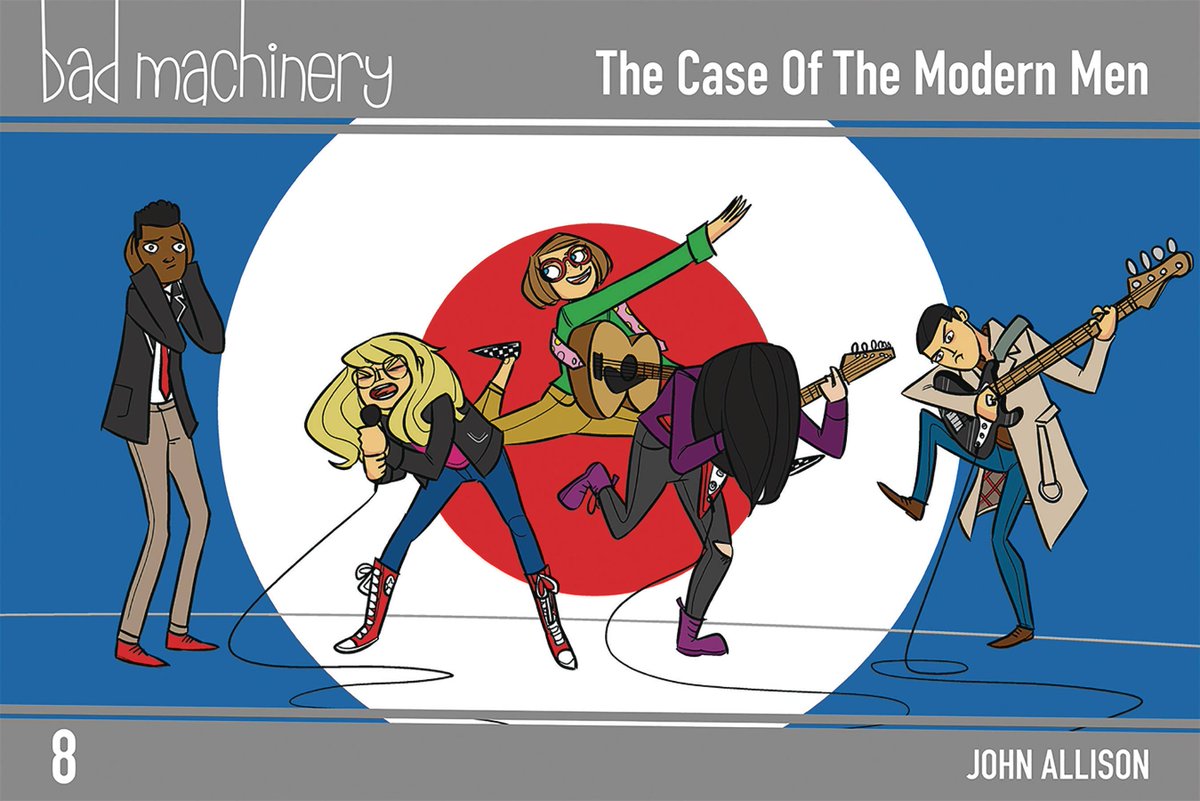
The Most Enjoyable in Show Award: Bad Machinery
Written and drawn by John Allison
If I ranked every comic in this list, Bad Machinery would be #2 of the 25 listed. That’s good, but if I ranked every comic in this list based off pure enjoyment, Bad Machinery would instead be ranked #1. I actually believe there has never been a comic I enjoyed more than this one, as while Scary Go Round is a delight, Giant Days is a wonder, and everything John Allison touches is gold, this is my favorite of his works. And few people speak David better than Allison, someone whose wit has been sharpened by decades of study of sitcoms and his cartooning has been heightened thanks to a similar amount of repetition.
This comic – starring six junior mystery solvers, but most of all, starring Lottie Grote, the greatest character in the history of fiction – was initially read almost in its totality in one sitting when I was meant to be working. I was prepping for a podcast with Allison in which we’d discuss his work on Giant Days, but instead of a pure focus on that title, I basically spent half the podcast asking him about random characters throughout the title’s run like Bobby Swaps and moments like when Linton celebrated earning lifetime tickets to Tackleford’s football club after the crew solved a mystery related to the team, which was perfectly balanced with everyone else being crestfallen at said award.
That’s because this book is so full of life it cannot be ignored in any way. Lottie, Shauna, Mildred, Jack, Linton and Sonny are endlessly charming thanks to Allison’s remarkable character work and his outrageously underrated art, and to read Bad Machinery is to love it. Each story is a different mystery, but for the most part, the mysteries are quick stories designed to let Allison play with characters and their relationships and the world of Tackleford. The characters grow as the story progresses, and it’s like Harry Potter but minus the wizardry and much of the formality and the bulk of the danger and…well, it’s not really like Harry Potter. But British! And the characters do age! And someone might have a scar…I honestly don’t remember. I may have lost my point.
The point is, if you love Giant Days, you’ll love Bad Machinery. It’s that simple. Read it – and the good news is, you can read it all right now without having to do more than click this link – and love it.
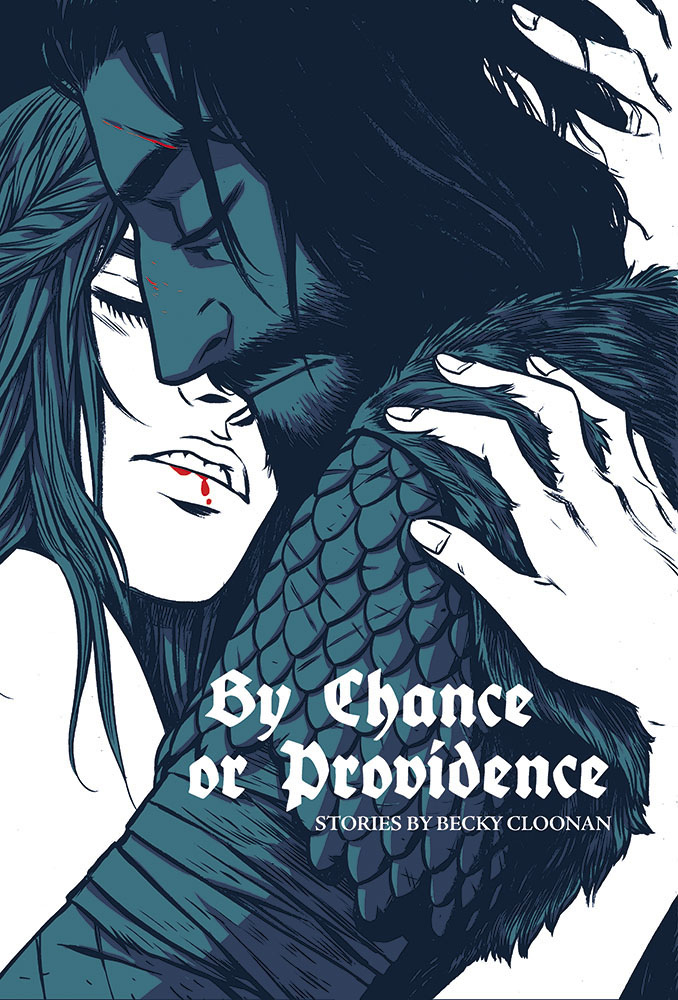
The Go Your Own Way Award: By Chance or Providence
Written and drawn by Becky Cloonan
Colors by Lee Loughridge
Quick note: this is based off the original, self-published incarnation of this story, as Becky Cloonan released her three digital-first mini-comics Wolves, The Mire and Demeter via Lounak in black and white well before it was published again via Image. I’ve never read the version with colors by Loughridge, but I am sure they were great!
But this earns a spot here both because I appreciate someone at the peak of their powers like Cloonan was taking the time to tell three very moody and atmospheric horror stories when she probably could have picked whatever project she wanted then, but also because how Cloonan told something that was fiercely her with a trio of gorgeous, dark, sexy tales with fantastical elements to them. Those two elements were huge, as was, well, you know, them being tremendous comics because it was Cloonan writing and drawing.
In fact, these might be the best looking comics Cloonan has ever made in my book, as the original black and white allowed for her to deliver a story with unbelievable weight to them, with her inks adding to the level of foreboding on each and every page. Cloonan has a rare gift to make the savage and tragic absolutely gorgeous, with each beat and page given a lyrical beauty that few cartoonists could top.
Whether you’re reading about a man on a mission to kill a fearsome wolf, a squire on a mission to deliver a message, or a pair of lovers haunted by the sea, you can trust that Cloonan is going to both deliver the unexpected and do so with maximum impact. That’s because of both her skills as a writer and as an artist, and as someone with faith in her own abilities and that going her own way can be the right answer for someone with the opportunities available to her. We were all the better for it.
Plus! This is the only thing I’ve ever read with a dedication to someone thanking them for a toaster oven, which isn’t a big deal to anyone else, but my god, it’s a big deal to me.

The Airship Award: Castle in the Stars
Written and drawn by Alex Alice
I love the Super Nintendo Final Fantasy games. They’re maybe my favorite games ever, and to say they’re a lasting influence is an understatement. There’s an entire fictional genre of music only I am aware of that I love because it reminds me of the music that was played as you flew the airships in Final Fantasy IV. That element is one of the broadest impacts on me personally, as those games made me absolutely adore anything involving airships.
For example, Alex Alice’s Castle in the Stars, a French album series that First Second is releasing in America. That comic is basically a Final Fantasy game in comic form – I describe it as “what if Hayao Miyazaki made a Final Fantasy comic?” – as it’s loaded with youthful but competent leads, theatrical villains, plots involving the moon, and, most of all, airships. That right there guarantees my interest, but Alice’s work as a cartoonist cannot be understated.
This guy is one of the best in the business, straight up, and I’d put his imaginative design (both on pages and within the world), potent character work, and wondrous watercolors at the top of the class for anyone. Each of the three volumes we’ve seen so far deliver highly satisfying, engrossing reads that take us to unbelievable places and unexpected wonders, and whenever a new volume drops, I feast upon it as if my life depends on it. It’s a compulsive read, but one that rewards drinking in the details and seeing the genius Alice comes up with on each and every page.
It’s a concept that’s right up my alley, and the execution matches it completely. While it’s one of the later entries into this effort, it was a lock from day one for obvious reasons.

The Influencer Award: Chew
Written and lettered by John Layman
Art by Rob Guillory
This is one of the few comics I can say I appeared in – eagle eyed readers can spy myself and my pal Brandon Burpee in issue #27 – but as much as I like that, this comic doesn’t make it for that reason. I’m not that vain.
No, Chew makes it for two reasons. First, it’s an outstanding comic, and one with real imagination, inventiveness, and, perhaps most importantly, heart to it. While it’s a wild idea about a world where chicken is outlawed because it killed a whole ton of people and where people have food related powers (like series lead Tony Chu and his Cibopathic abilities, aka, the ability to know what someone or something experienced when he eats part of it), it works as well as it does because we get so invested in its cast members like Tony, his sister Toni, his partner Colby, his daughter Olive, wife Amelia, and so many other characters.
When characters die or characters separate, we don’t just engage and move on, we feel it. And that’s important. That’s where the weight of the book comes from, as John Layman and Rob Guillory get us fully invested in each aspect of this story. It’s more than that creatively – it’s a remarkably funny book, both through Layman’s scripts and Guillory’s much bandied about details throughout the world – but the heart is essential to making the whole thing work.
The second reason, though, is Chew’s place as one of the most influential comics of the decade. That might surprise you, but it’s like Image’s Publisher Eric Stephenson has told me many times: Chew was the title that helped other creators realize that Image could work for stories of all varieties. While The Walking Dead and Saga were important too, Chew was evidence Image could use to say that what the publisher was doing could work for any creator and any story. That made Chew carry a disproportionately impactful for Image’s rise during this decade, and that cannot be understated. That’s hugely powerful.
This comic would have made it on its own merits, but that influential nature cannot be undervalued. It’s a true influencer, and not in an Instagram way, but in a genuinely effective sort of way.

The Lifetime Award: Daytripper
Written and drawn by Fábio Moon and Gabriel Bá
Colored by Dave Stewart
Lettered by Sean Konot
True story: when I first read the debut of this series, I was genuinely frustrated. I remember being thrilled Bá and Moon were telling their own story at Vertigo – with Dave Stewart coloring, no less! – and when I dug into it, I was astonished by the art and poignant story. And then…the lead character died! I was flummoxed! What the heck was going on here?
I came back for the second issue anyways, as Bá and Moon were worth digging deeper, and the series lead was back…but younger this time. I read it again, and sure enough, it happened again! He was dead! I was apoplectic, storming about, wondering what game they were playing.
Each time an issue arrived, I came back, but each time, I picked up on what was happening more and more, and by the end, it became something that I no longer raged at, but learned from and revered. This series is about death, but it’s also about life, and about how the former creates value in the latter and vice versa. There’s a real carpe diem nature to the story, but it’s more nuanced than that, as it shows we both have to be present but also mindful of the world and people around us because there’s value and a cost to everything we do.
Bá and Moon created something that escapes the confines of traditional narratives even if the bulk of the story is just that, and it’s something that creates self-reflection with its poetic study of the many lives and many deaths of Bras de Oliva Domingos. It’s like a choose your own adventure story, but only in the same way that life itself is: our choices help build a better future for those to come, and for those around us, so let’s be conscientious about that.
I consider myself almost incapable of properly expressing the themes of this story, as it’s so feel based. But Bá and Moon deliver those feelings and emotions in a stunning way, both through their restrained yet potent wordplay and their art that finds the pair at the peak of their powers. This is an exceptional work by a pair of twins who are individually as talented as anyone, but together, their gifts are amplified to even higher heights. It’s regularly featured on these kinds of lists, and for good reason: it’s an uncommon achievement, even if it did make me mad for the first couple months I spent with it.

The Build/Destroy Award: East of West
Written by Jonathan Hickman
Line art by Nick Dragotta
Colors by Frank Martin
Letters by Rus Wooton
While The Black Monday Murders might be Maximum Hickman, House of X/Powers of X might be Most Popular Hickman, and the following comics might be the Finest Hickman Work, East of West might be Hickman at his most pure. It’s all style and substance and swagger and decimation and outrageous portends of the future and brilliance, all wrapped up in a bow of Western and science fiction influences. It’s a hell of an achievement, and one that wraps up this very week. 3 As its rate of release has decreased, I feel like we’ve begun to sleep on this title’s greatness, but let’s not forget: this comic absolutely bangs.
A huge, huge, huge part of that is because of a name that went unmentioned in the previous paragraph: Nick Dragotta. With any other artist on board, this title wouldn’t have been the same. Look at any issue and you can see how much Hickman relies on him, as so much of the mood and tone and impact comes from Dragotta and his visuals with colorist Frank Martin. This title needed someone who could give pages a lyrical, almost elegiac feel, like we’re truly reading a recounting about the end of the world after it happened.
Dragotta nails that vibe throughout, whether he’s giving us a compelling, unforgettable imagery like the image above or nailing each beat of an almost entirely silent issue. Dragotta and Martin carry a disproportionate amount of weight in this book, and many art teams wouldn’t have been able to carry us there. They did, and their work with Hickman and letterer Rus Wooton helped turn a book with big ideas into something that worked at all levels. It was a full team effort, for sure, especially with how important the style and delivery of Hickman’s proto data pages were for controlling pace and tone in this story. But this is a title where it needed a Herculean effort from the art team to get where it did, and it got there because Dragotta and Martin had it in them. Much respect to all involved, and I’m excited to see where it all ends on Thursday.
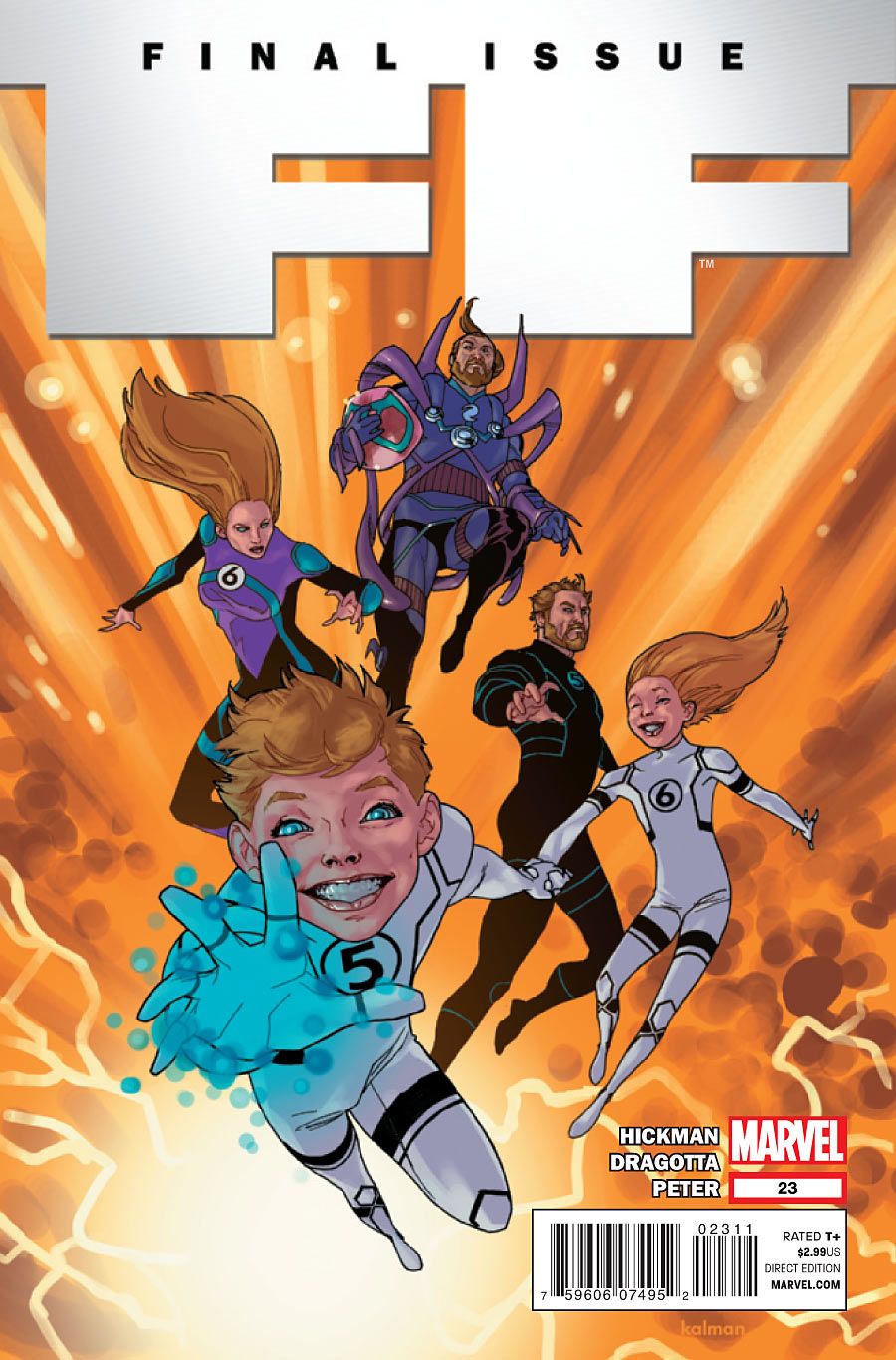
The Comic of the Decade Award: Fantastic Four/FF
Written by Jonathan Hickman
Line art by Steve Epting, Nick Dragotta, Neil Edwards, etc. etc.
Colors by Paul Mounts
Letters by Rus Wooton
I revealed in my decade retrospective podcast with my pal Brandon that this was my favorite comic of the decade, so this should be no surprise. It’s from my writer of the decade in Hickman. It features several of my favorite artists, like Steve Epting and Nick Dragotta. It’s home to my favorite single issue of all time in FF #23. It’s the greatest run – I said it! – of Marvel’s first and arguably most important heroes ever.
And the reason it works as well as it does is because it’s Hickman showcasing what we know him for – his meticulous long-term planning, his clever planning, his unparalleled abilities at writing villains – but also for something people sleep on him for: his gifts at giving a story genuine emotion. Beats like Johnny Storm’s apparent death and The Thing’s eternal life don’t mean anything unless Hickman and his artistic partners can give those moments weight, and they find a way to make us care about a character death and another’s apparent inability to do so. It’s something he doesn’t get enough credit for, but he’s Omega level even in that aspect.
That’s perhaps most potently realized in the aforementioned FF #23, a single issue that’s effectively an examination of the important of imagination and wonder to us as humans, as Hickman and Dragotta – again, completely crushing it as he did with East of West as well – use the relationship between young and adult Franklin Richards to make us feel the passion for the world we felt as children once more. It’s the best comic I’ve read this decade, and it is from a pair of titles that comprise the best story I read in comics this decade. That’s a heck of a thing, and a pitch perfect showcase for everything that makes these titles as great as they are.

The Influences Award: Fantasy Sports
Written and drawn by Sam Bosma
Fantasy Sports, the so far three volume graphic novel series from Sam Bosma and Nobrow Press, is a comic you can see and feel the influences throughout. Its origins are heavily rooted in dungeon crawler games (both of the video and tabletop variety) and Bosma’s deep love of basketball – this series originally started as a self-published title called Fantasy Basketball – with the whole thing baked around those passions. The whole premise orbits around those dungeon crawler roots, as leads Wiz-Kid and Mean Mug are literally in the business of recapturing treasures in dungeons for the United and Ancient Order of Mages, with treasures only able to be acquired if the pair wins at a particular sport.
And in the first volume, basketball is the game, and hoops fans can see favorites in the games of Wiz (Steph Curry and Kyrie Irving are there, with Curry being particularly evident), I’d argue you can see Russell Westbrook in Mug’s jumper, and the first volume’s villain He of the Giant Steps is built off Hakeem Olajuwon and Kareem Abdul-Jabaar (particularly the latter’s skyhook). So the influences are evident.
But it’s more than a jumble of influences, as Bosma has turned what could have been a cute one-off into an engrossing series with an imaginative world and rich characters throughout. Each volume leverages a different game as its spine – the others were volleyball and golf – which gives each book their own flavor. 4 They’re also a blast to read, with charming, manga influenced art and phenomenal storytelling guiding the way throughout, as well as a mystery involving the organization Wiz and Mug work for developing within the three books.
Also, I’d be wildly off brand if I didn’t mention how much I love Nobrow’s production value. These books have a high end, super sized Little Gold Books feel, matching the all-ages readers nature of Fantasy Sports as a series. The stellar paper stock adds weight to the impact of the story and the desirability of the product, making it all the better. This is a wonderful series, and while it’s uncertain if it will ever finish – Bosma seems focused on non-comics projects right now – whatever happens, I’m happy to have had this series in my life all the same.

The Art of the Decade Award: Fury MAX
Written by Garth Ennis
Line art by Goran Parlov
Colored by Lee Loughridge
Lettered by Rob Steen
Let’s get a few key things out of the way. Lee Loughridge’s colors and Rob Steen’s lettering are absolutely essential to this series. Garth Ennis knocks this idea, this script, the execution and everything else out of the park. This is my favorite Nick Fury story ever, and “My War Gone By” proves to be the perfect subtitle for the series as it’s a heartbreaking, haunting read about the cost of war to a man who defined his life off of it. This is one of the best things Ennis ever wrote, full stop.
But the instant classic, eternally memorable nature of this 13 issue maxi-series is heavily built off of artist Goran Parlov’s absolutely unreal run on the title, as each and every beat that Ennis proposes is elevated into instant classic nature by Parlov’s delivery. You can see the weight and cost on Fury without needing to read any words from him or those around him just because of how effective Parlov is at conveying nuance. This series is a highlight reel of iconic shots by the veteran artist, whether you’re talking about full page splashes, quiet moments of sadness and torment, or explosive action.
There’s a lot of reasons to love this series, but it gets a spot on here primarily on the strength of the art of the decade from Goran Parlov. He’s a stone cold killer, with Fury MAX being the finest moment of his career in my opinion.
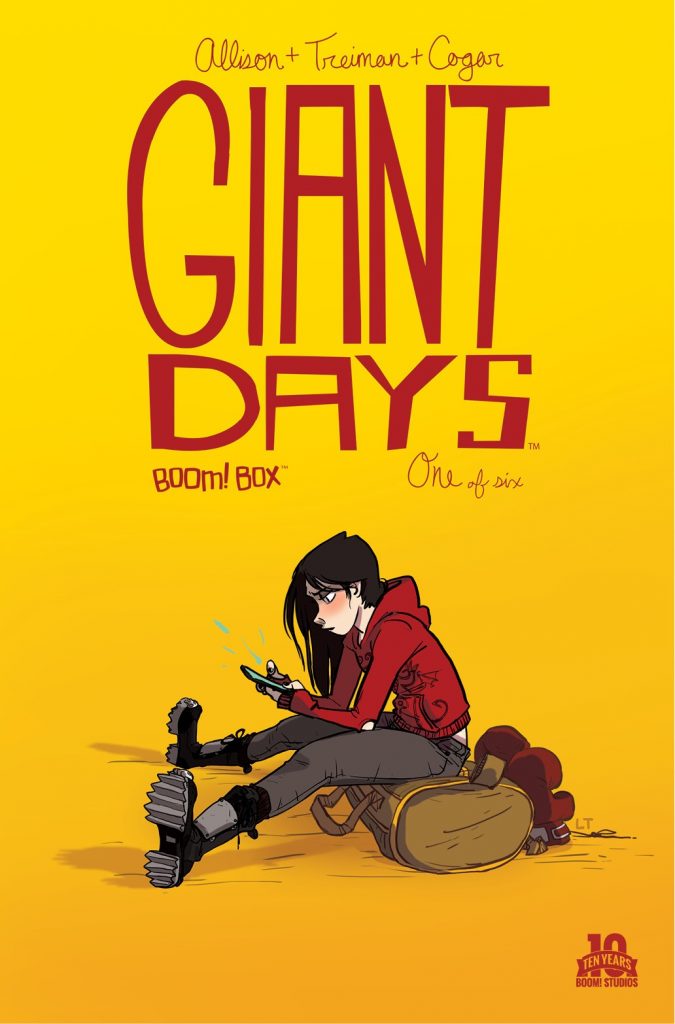
The Autobiographical Award: Giant Days
Written by John Allison
Line art by Max Sarin, Lissa Treiman and John Allison
Colors by Whitney Cogar
Lettered by Jim Campbell
There’s no comic I felt more than Giant Days, John Allison, Max Sarin, Lissa Treiman, Whitney Cogar and Jim Campbell’s now complete BOOM! series. In characters like Esther, Susan, Daisy, McGraw, and Ed Gemmel, I didn’t just find entertainment, but a reflection in all of big emotions and bad decisions I myself made in college. While some might view those types of experiences as negatives, I found them to be a training ground, and one in which I learned what are the right things to do and what are the wrong ones, just like that quintet did. Reading Giant Days was in some ways a reflection of myself at times, even if I’m not British, far less clever, and perhaps not as competent as any of them.
Of course, it was more than that. Giant Days was one of the most entertaining series of the decade, arguably coming third behind Allison’s other series Bad Machinery and another title that’s set to come on a later day. That was a massive part of my love of it as well, as Allison’s wit and Sarin + Treiman’s expressive character acting led to hilarious moments throughout. It was a clever book, but one that never lacked in laugh out loud beats.
While it took me a minute to get over Treiman’s art leaving the title, I will say Sarin’s work was arguably the biggest revelation of this series. They started out as an effective replacement, but quickly became more than that, and eventually became something transcendent in their own way, delivering some of the finest character work in all of comic art. Allison needs an artist who can match his own abilities as an artist, and Sarin’s work – I hate to say it – may have outdistanced his own in some capacities.
The funny thing about this book, though, is that Allison, Sarin, Treiman and friends were so effective at building up these characters that I’m going to miss them when they’re gone. For many, that’s already happened. For me, it’s still to come with the final trade release. I’m just happy that the team had the chance to go beyond the originally proposed six issue run on the book, and was able to deliver something that didn’t just make me feel – as the kids say – seen, but something that brought me such joy over the length of its run.

The Comfort Food Award: Hark! A Vagrant
Written and drawn by Kate Beaton
I wrote about this series recently at outrageous depths, as my Revisitor column looked back on Hark! A Vagrant’s sextet of strips about a pair of nautical nemeses, so I’m not going to go too deep. Much of what I want to say is covered there.
But I will say something I didn’t mention there: there are few comics I revisit more than this one, as Kate Beaton’s webcomic series that tours the world of literature and history in equal measures has provided me unbelievable amounts of joy at random moments when I need a pick me up. Had a bad day at work? Pick up one of the title’s collections and read a few pages. Glum because of the weather? Read the above strip about a particularly happy pigeon and feel joy return to my body. You name the situation, Hark! A Vagrant could provide a solution.
That it stands up to repeated readings means a lot to me, because it means that Beaton’s talents as an artist, writer and just her incisive and inventive mind rewards returns to the text. My joy doesn’t diminish, and it becomes like comic book comfort food for me, never diminishing and always entertaining regardless of the situation. That’s hard to find, and it makes this title one of my most beloved ones from this decade.
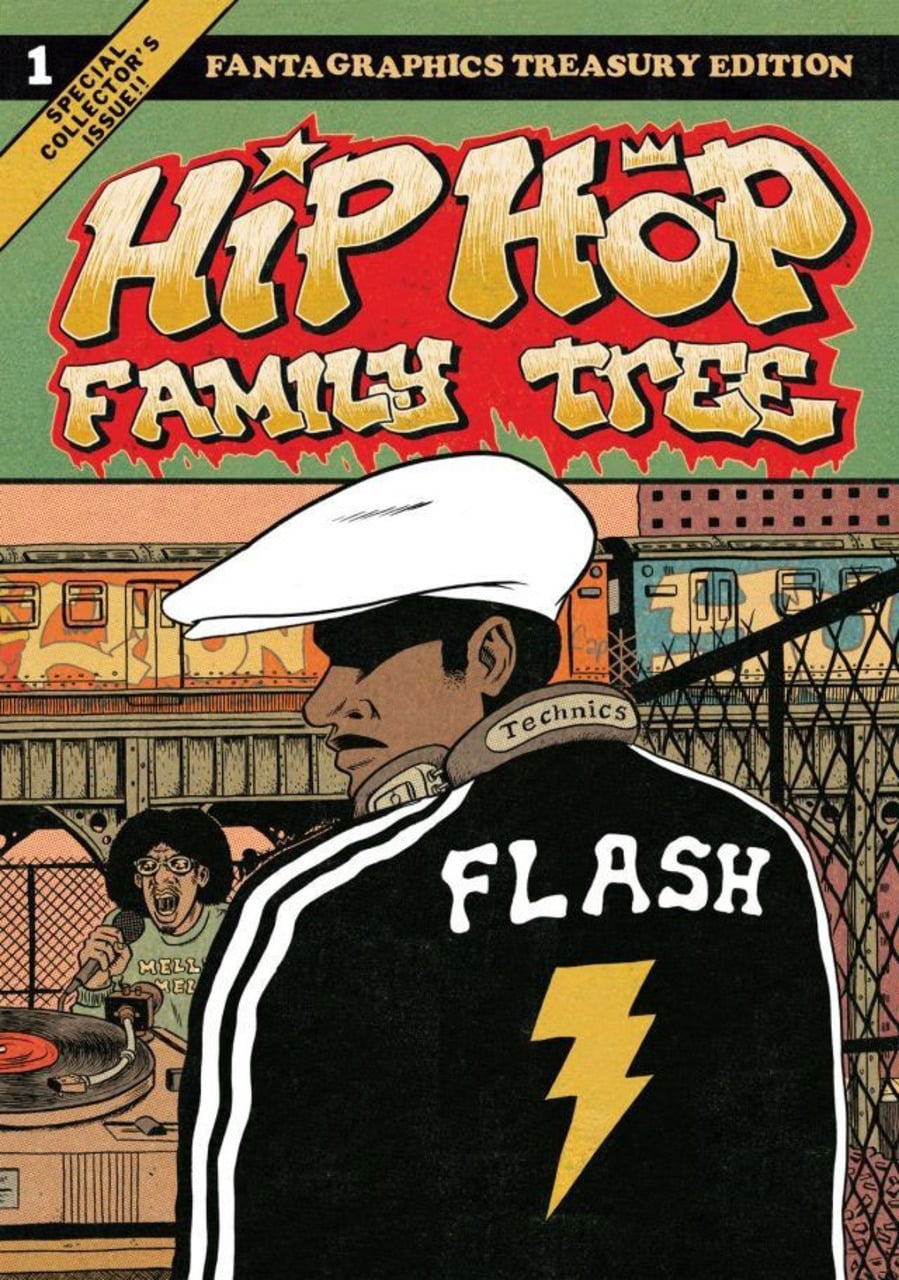
The History Lesson Award: Hip Hop Family Tree
Written and drawn by Ed Piskor
True story: when I was 12, I received N.W.A.’s Greatest Hits album for Christmas. I was always a huge rap fan, as even when I wasn’t super into other types of music, I had a big place in my heart for the Beastie Boys, Wu Tang Clan, and the aforementioned rap supergroup. It was just a thing I did, along with comics, video games and following all of the sports.
Here’s another thing that might surprise you a little bit less: I’ve always loved reading about the story behind things I love. Learning about how a comic came together, or stories from a movie’s production, or the development of video games, or any number of other things like that is basically my jam.
So when Ed Piskor fused those two loves together into one incredible comic series – one that I’d argue Piskor was born to write and draw – I was destined to adore it as well. And I did! The Treasury Editions of the series are displayed proudly on top of my bookcase – they’re too tall to fit within it, because of course they are – and I’ve devoured each multiple times, as Piskor’s remarkably structured brain, in-depth research, and brilliant storytelling abilities made for a series that sheds a whole lot of light on the story behind hip hop in an entertaining and impactful fashion.
It’s a heck of an achievement, a history lesson that’s easy to take in because of just how effective Piskor is at making his beloved comic books, the one thing he might like more than hop hop. It gave me just what I always wanted without even knowing it, in a format I deeply love. It was the best of both worlds, and I for one hope we keep getting more of it in the future, even though it wouldn’t matter if we did, just like with Bosma’s Fantasy Sports.

The Advocate Award: Kaijumax
Written and drawn by Zander Cannon
Color assists by Jason Fischer
There’s probably no comic I’ve advocated more this decade than Zander Cannon’s Oni Press series Kaijumax. This title that has the world’s best elevator pitch – Godzilla meets HBO’s old prison drama Oz – is something that should have worked just based off its concept but became even more thanks to Cannon’s ingenuity and gifts as a cartoonist. It’s on my shortlist for my favorite titles since it first arrived, and it has only gotten better since then.
So I doubt I need to say much more than I already have. It’s hilarious, but also tragic. It’s clever, but also sincere in heartbreaking ways. It’s absurd, but also painfully real. Its art is cartoony, but nails every dramatic beat. It’s a blend of everything that goes into a truly great story, but also a serious look at what would go into a prison for giant monsters. Kaijumax might not be for everyone. I know that. BUT IT SHOULD BE. IT IS THE BEST.
I love Kaijumax. Please read it.

The Total Package Award: MIND MGMT
Written and drawn by Matt Kindt
I thought about trying to explain the plot to this comic as part of this write-up, but beyond saying it’s the story of a woman trying to solve one mystery and unlocking one that’s far larger than she ever imagined, trying to do that would be a fool’s errand. MIND MGMT has a plot, and it’s a very effective one involving superpowers and secret organizations and tragedies and plenty more, but in some ways, MIND MGMT is about the impact of story on people and how all of our lives are just that: stories.
It’s about narratives and influence and control, all things we have in our normal, ordinary lives, but can be superpowers if used correctly – or deeply incorrectly, as we’ve learned in recent years. It’s a deeply engaging and entertaining story in some ways, but Matt Kindt always builds levels into his tales, and it’s something much more than just a ripping yarn thanks to that side of the master cartoonist.
Kindt’s art is perfect for the book, and it’s worth noting that it’s not just his line art or the watercolors he uses on the book that define that idea. The way Kindt uses marginalia and details in design to add to our understanding of what’s going on – or even expand on the confusion in effective ways – is astonishing. Not to be slept on is the production value to the book overall, as the trades were good, the hardcovers were great, and the omnibuses might be even better. These were all beautiful productions, and ones that didn’t just house the story, but add to its impact.
Few titles were the total package that MIND MGMT was, and impressively, Kindt did this on I believe a monthly schedule by himself, proving the cartoonist to not just be good but maybe insane and sleep deprived? I’d say it’s Kindt’s finest work. Some may disagree, but even for a stone cold killer like him, this is a relatively easy call. MIND MGMT is a brilliant book, and a hell of an achievement by one of the medium’s greatest talents.

The Queen of Cats Award: The Nameless City trilogy
Written and drawn by Faith Erin Hicks
Colors by Jordie Bellaire
There is a simple reason for The Nameless City’s trilogy of books making my list: Faith Erin Hicks is my favorite cartoonist, and this was her magnum opus, a 700+ page graphic novel series that takes place on the rooftops and streets of the titular Nameless City. It’s a heck of a series, telling the story of a pair of youths separated by circumstance but united by the bonds of friendship who get involved with a larger conspiracy to take over the city. Naturally, this unexpected pair becomes essential to saving it, and their friendship forms the heart and soul of the series.
Kaidu and Rat, that aforementioned pair, give us perspective on this world that’s new for one and old hat to the other, and the push and pull between their experiences and insight provides the backbone of a tight, entertaining read that showcases Hicks’ abilities as a storyteller but also as someone who can deliver echoes throughout a longer form story. The final volume – The Divided Earth – has lovely parallels with earlier story beats throughout, and by the time we get to the end, you can’t help but smile and perhaps shed a single tear about where Hicks leaves us.
It’s visually resplendent as well, with Hicks delivering her trademark A+++++ character work – no one can bring a character to life like her – while also bringing an energy to fight scenes and Kai and Rat’s famous rooftop runs that we had rarely seen from her before. Pairing her with colorist Jordie Bellaire was an inspired choice as well, as Bellaire’s flatter look helps the characters – the true emphasis – pop all the more while accentuating the emotions of beats. It’s a gorgeous, well-told story visually, as we could only expect from the pair.
But that pair of leads is what I’ll remember the most from the series, as Kai and Rat’s presence is nearly universal within the book and act as our connection points to this world. They work, and work well, so the rest of the series does too. So much so that when my wife suggested the name Kai for a kitten we had just adopted – Kai, the curious youth who learned to let go and jump from rooftop to rooftop – I energetically agreed. Thanks to Faith Erin Hicks for the brilliant trilogy, and for accidentally naming our cat! I’ll take it!
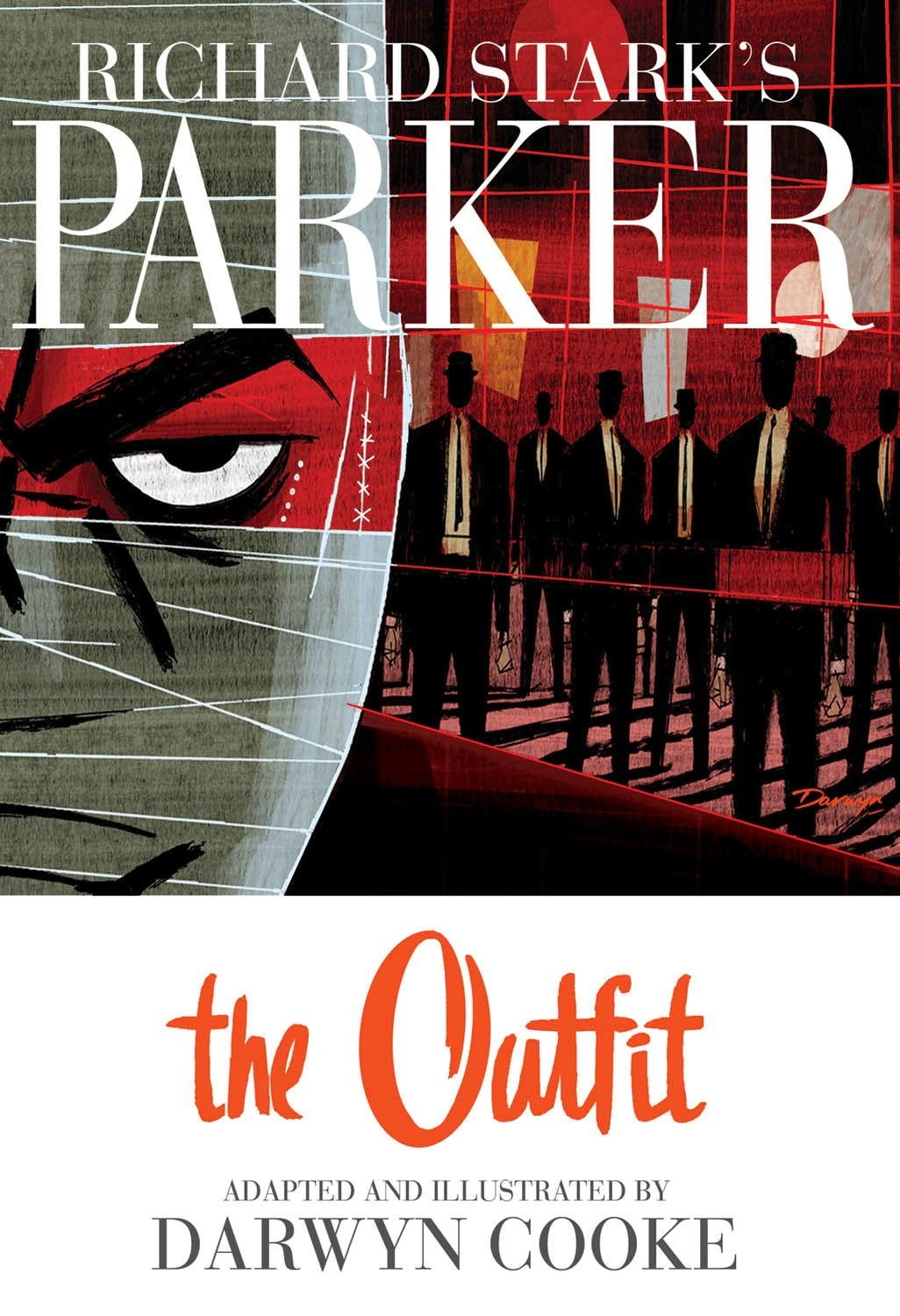
The Match Made in Heaven Award: The Parker books
Written and drawn by Darwyn Cooke
I feel like these books are being slept on when it comes to the Decade in Review type articles, and that’s mostly because the first book – Parker: The Hunter – was released in the previous decade, and I’d say that most would agree it was the best of the quartet Cooke adapted from Richard Stark née Donald Westlake’s stories of the world’s most ruthless yet pragmatic criminal. But to say The Outfit, The Score and Slayground – the trio of graphic novels Cooke produced within this decade – are less than The Hunter is like saying The Godfather is slightly less than The Godfather II: factually accurate but you’re talking about degrees of greatness here. 5
That trio, particularly the more robust The Outfit and The Score, are on the shortlist of the finest works of Cooke’s career. And a big part of that comes from how perfect the pairing of character and creator were. If you made a Venn diagram of Cooke’s strengths and what makes Parker a great character, it’d just be a single circle. It’s a complete overlap. Cooke’s handling of these stories emphasizes the brutality and brilliance of Parker in equal measures, and you come to not only enjoy reading his tales, but respect the greatness of the character. 6
Cooke’s art is perfection throughout as well, as he gives everyone enough edge to feel dangerous but enough life to feel like more than caricatures. That’s an important blend, as you want to want to be in this world, but you also want to feel the risk being taken by all involved. You can see the allure of a life of crime thanks to Cooke’s art, but also the downside. The coloring throughout is also appealing, as he keeps it to single tones largely, giving the whole book an inkier feel, reinforcing the tone visually without even making people realize it. Cooke found the perfect artist for his writing on this title – himself – and it made the comic all the better.
The Parker books are on my Mount Rushmore of favorite Darwyn Cooke releases, and with his passing this decade, it’s only fitting that they earn a spot here. The perfect work for one of the most perfect cartoonists we’ve ever seen. That’s the only way it could be.
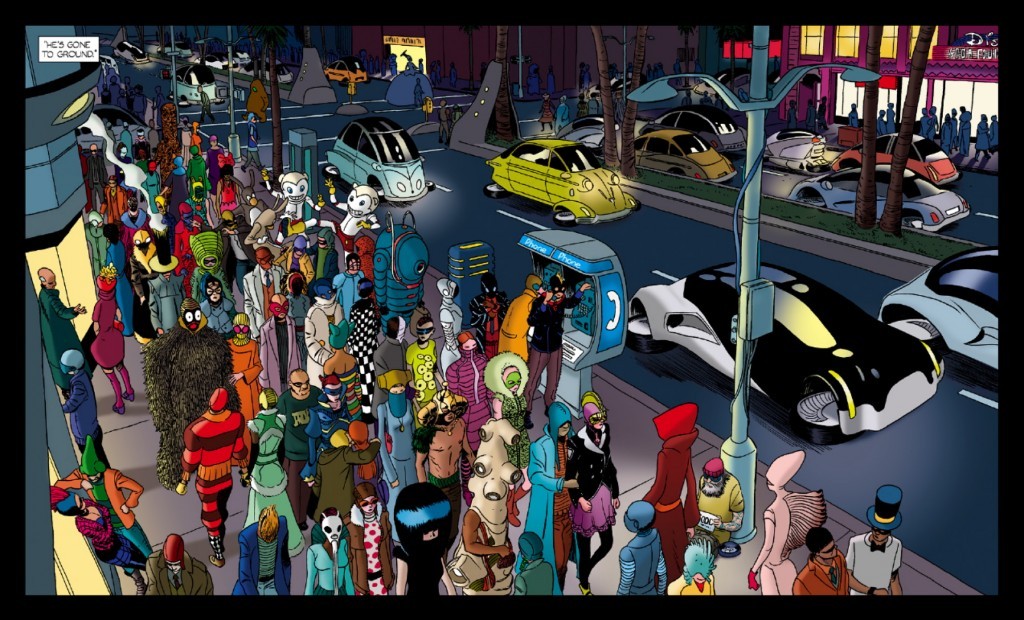
The Renegade Award: The Private Eye
Written by Brian K. Vaughan
Line art by Marcos Martin
Colors by Muntsa Vicente
There are a lot of things to love about the Panel Syndicate’s debut release, The Private Eye, but I want to start with its unique nature as a comic book renegade. We have an A list team in Brian K. Vaughan, Marcos Martin and Muntsa Vicente and a science fiction concept that combine to make this seem like a sure shot Image release. So what did the team do? They created their own digital first publisher to release the comic through, and they made it pay what you want in the process! It was absolute madness, and something that could have failed as easily as it worked. The good news was they were in a position to take risks, and it allowed them to do something big.
And it was a spectacular success, something that made for a thrilling effort conceptually and a comic that was tremendously well-crafted and as inventive creatively as it is from a delivery standpoint. Its premise – a post-internet future in which a private investigator attempts to solve a mystery without losing everything in the process – was a good one, but it’s BKV’s incisive takes on privacy and unique thoughts on the future paired with Martin and Vicente’s visuals that set the tone and invent a future that elevate it even higher.
This was a great comic, and one that was both exciting for what it rolled out and how it rolled out. Even how every issue was digital first until far later they released the title in a collection through Image. It was a great move. I’d love to see more inventive approaches like this in the coming decade, in which other creators learn from what Vaughan and Martin did with this title and the Panel Syndicate. I’m not sure if this should be the future, but I feel like an effort like this could be a part of the future, or at the very least these kinds of bold renegade plays. Fingers crossed.

The Terror Award: Through the Woods
Written and drawn by Emily Carroll
My nephew and his wife are massive horror fans. They love it, particularly when it’s more of the building terror type. You know, the ones where you can feel the dread growing so the tension just grows and grows until it’s a massive knot inside you just waiting to break out. That kind of thing wins over jump scares for me as well, so when I was considering Christmas presents for them a couple years ago, I knew the right move: I was going to buy Emily Carroll’s Through the Woods for them.
Carroll’s one of the best storytellers in comics, regardless of genre, but her gifts with the horror side of the world are genuinely unparalleled in Western comics. Through the Woods is an unbelievable showcase for those talents, as Carroll uses limited color palettes, inks that could tear a heart in your soul, and restrained yet clever pacing to escalate the tension in all five stories within this remarkable graphic collection. 7
This title and the previously mentioned By Chance or Providence by Becky Cloonan share a whole lot of DNA, but Carroll favors fear over romanticism and negative space over lush linework, making it a scary book with a different feel. Through the Woods is a more taut and eerie read, and one that elicits dread out of readers with just its bold color choices against stark backgrounds and fluidly flowing layouts. One of my favorite parts about these comics hasn’t even been mentioned, and that’s the hand lettered feel. 8 It feels like we’re reading notes from someone, with the imperfections in line and elegantly paced placements adding to the urgency and the stress of the read, while connecting us even more with those involved. It’s a book of important, atypical choices. Each of them works, and works well.
This is the scariest comic I’ve ever read. Nothing else is close. But it’s so well-crafted and perfectly made – shouts to Margaret K McElderry Books for the production value! – that I cannot help but revisit it, even if it genuinely haunts me when I do. It’s the type of terror you want to share, which is truly rare. Sorry Tyler and Shelby! Hope you enjoyed my present!
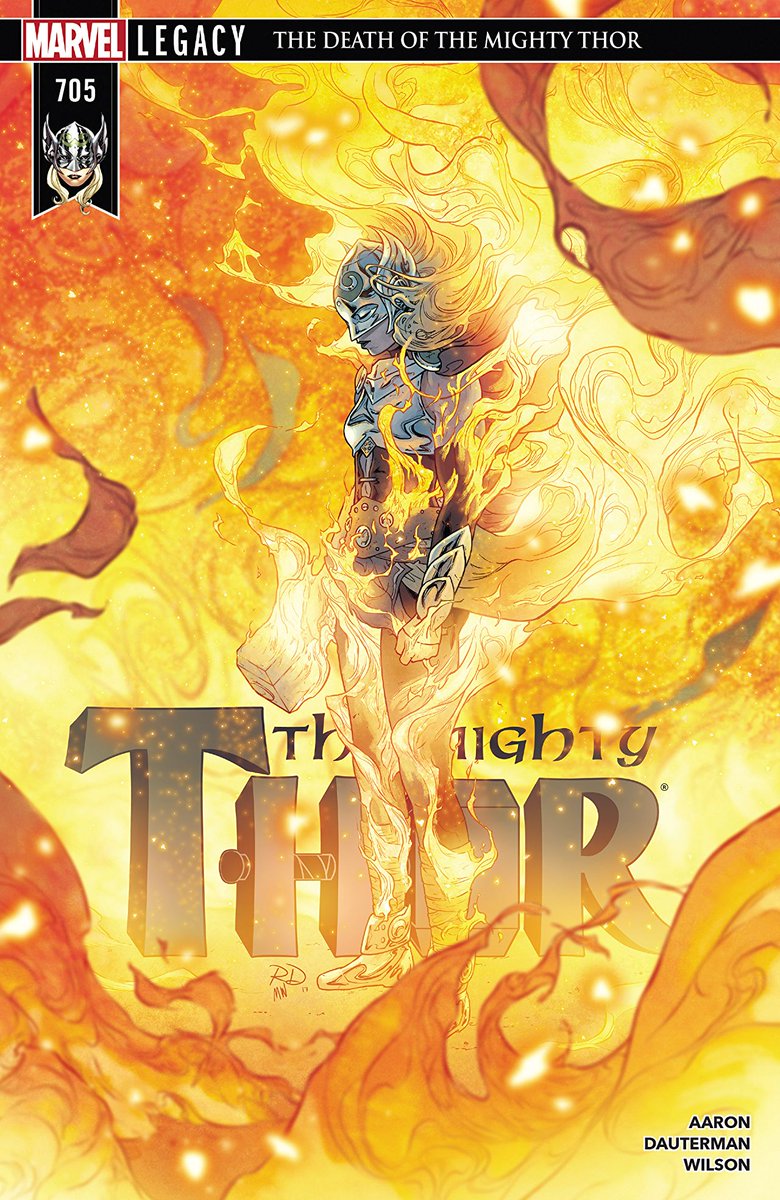
The Writer Run of the Decade Award: Thor (the larger run from this decade…you know the one)
Written by Jason Aaron
Line art by Esad Ribic, Russell Dauterman, Mike del Mundo, etc. etc.
Colors by Ive Svorcina, Matt Wilson, etc. etc.
Lettering by Joe Sabino
First note here: I am missing a lot of names that worked on this Thor run. It’s been a tremendously long one – modern era standards, but also really any standards – and because of that, we’ve seen an unbelievable amount of creators work on this book. So this whole thing is with apologies to the people that aren’t credited above, like Tony Moore – who wrote one of my favorite stories from it – and Wil Moss (who edited the…entirety of this run?).
Second note here: apologies to Esad Ribic, Russell Dauterman, Matt Wilson, Joe Sabino and the other core team players. Ribic’s art in the initial Thor: God of Thunder story was a staggering achievement, and the most metal a Marvel comic ever was. Dauterman’s visuals were essential Jane Foster’s Thor reaching the heights it did, as were Wilson’s colors, which were the perfect complement to everything Russell did. Sabino was a rock, and near as I can tell, was one of the few constants on these titles. That’s super valuable on a title with a lot of other changing visuals.
Now that those notes are out of the way, though, it’s time to talk about the core of this run, and that’s writer Jason Aaron. It was one of the longest runs in modern memory for any writer, which is an impressive thing, and it was one of the best, which is even more important. Combine those two, and it’s only a short distance to deciding that his was the writer run of the decade, but it’s also more than that. Let’s talk about the two things that got him the rest of the way there.
Aaron’s writing was fearless throughout, as he made the bold choice of making Thor not Thor and making Jane Foster Thor, which was a wild move. But also a great one, as it’s a huge part of what fueled this and helped it become an all-timer. That kind of risk taking was evident from the start, as Aaron and Ribic co-created one of the best new modern villains from the decade in Gorr the God Butcher, and it went far beyond Foster and Gorr. It was a defining part of what Aaron brought to this title, and it was far better for it.
The other was how meticulously crafted it was. While I have no doubt that Aaron didn’t have every detail worked out from the jump, he at least made it feel like he did, as beats that felt like they were years in the making didn’t just arrive but managed to not disappoint. There was a circular structure to it in some ways – in the same ways that most Marvel titles are – but it felt less mechanical than that, as it bobbed and weaved and ducked and dived through stories that kept us on our toes but never lacked in drama.
Jason Aaron and friends thrilled and impressed, shocked and awed, and did plenty more on their way to creating the story that didn’t just earn the writer run of the decade award here, but managed to snag the top spot on my personal Thor power rankings. That might sound like hyperbole, but hey, if it works, it works!
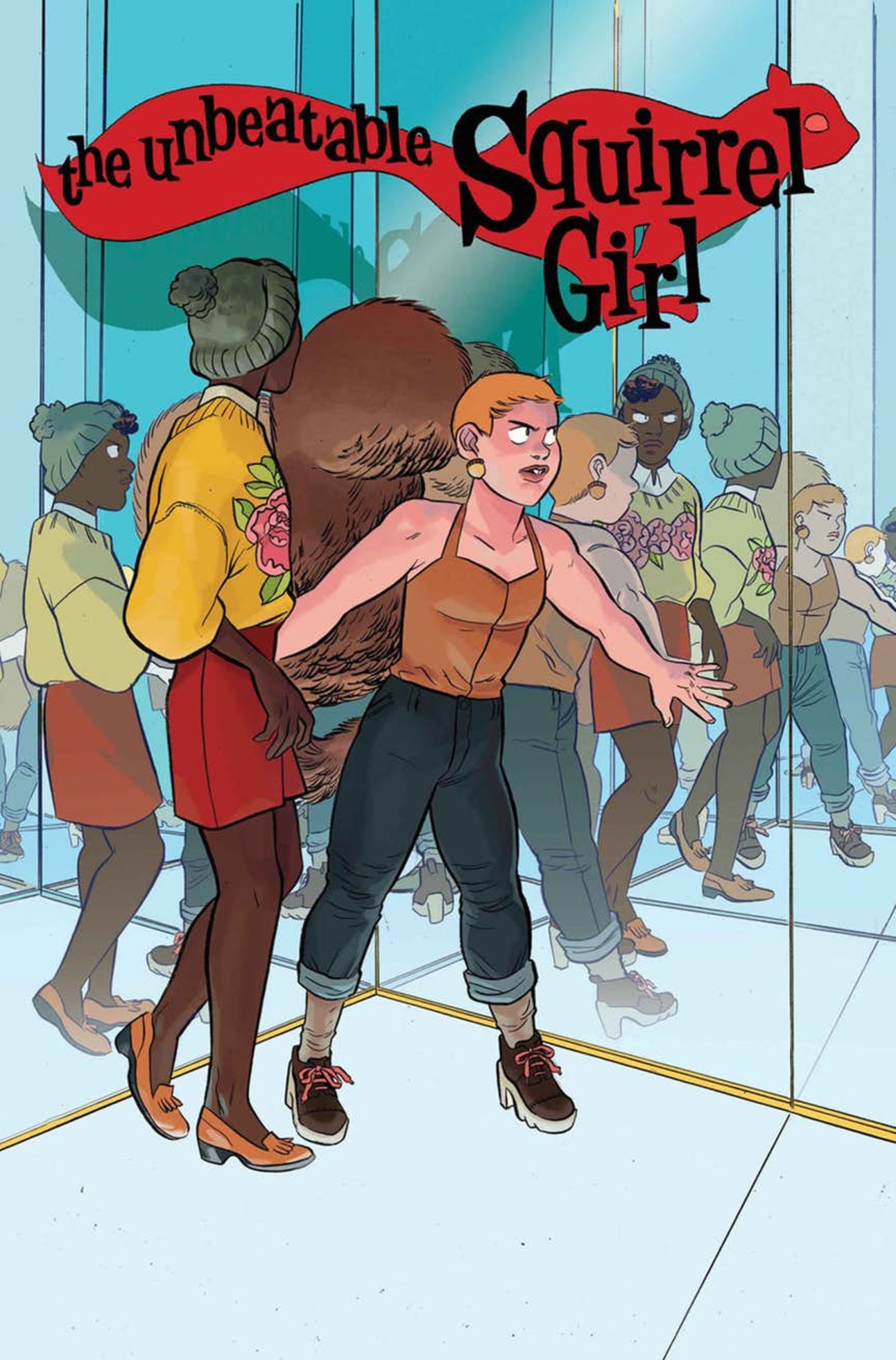
The Hang Out Award: The Unbeatable Squirrel Girl
Written by Ryan North
Line art by Erica Henderson, Derek Charm, and more
Colors by Rico Renzi
Lettering by Travis Lanham and Clayton Cowles
As previously established on this very website, the comic with the cast I most enjoyed hanging out with was The Unbeatable Squirrel Girl. This series with 58 issues and one graphic novel accomplished a whole lot over its run, but most of all, it created a new vision of a previously known hero and a supporting cast that was just a blast to hang with. Every villain was a potential new friend, every stranger could be a fave in waiting, and because of that accommodating spirit, it felt like we too were welcomed with open arms.
That’s a big part of what I’m going to miss about the series, but also a huge part of what makes it one of my favorite comics of the decade. But beyond that, there was the unforgettable glow up the character had during this stretch too, as Ryan North, Erica Henderson, Derek Charm, Rico Renzi, Travis Lanham and friends had maybe the highest WAR of any superhero creative team of the decade.
What’s that, you might be wondering? Well, WAR is a baseball statistic that means Wins Above Replacement, and for Squirrel Girl – a character who was largely a joke before – she went from a subreplacement level to an immediate A-lister. That’s a massive difference – for the baseball inclined, please think of Mike Trout levels, and for non-baseball types, it’s real good! – and something that helped make the character’s decade all the better.
Ironically, Squirrel Girl – or Doreen Green – would probably hate WAR as a statistic, as it suggests that perhaps everyone doesn’t have greatness within them. That’s another treasured part of the series and character, as the team found a way to instill Doreen with a palpable goodness that made her truly unique relative to her peers. That was realized throughout the series in the atypical ways she dealt with villains, how she aimed to help others around her, and perhaps most of all, how she managed to become pals with Galactus. All of this was perfectly realized by Henderson, Charm and Renzi, with the former standing out in particular, as Henderson’s brilliant character acting made her an artist I will follow no matter what she does in the next decade.
High levels of WAR or not, The Unbeatable Squirrel Girl was an important comic – it opened a lot of doors for all-ages friendly comics at the publisher – but more crucially to me, it was a delightful one. I just enjoyed hanging out with these characters and the creators who made them what they are. That’s plenty for me, and certainly enough to make the list.

The X-Men Story of the Decade Award: Uncanny X-Force (but specifically the Dark Angel Saga)
Written by Rick Remender
Line art by Jerome Opena, Esad Ribic, Mark Brooks, Billy Tan, etc.
Colors by Dean White and Matt Wilson
Letters by Cory Petit
This is an award that’s going to start with some caveats, because of course it does.
- This isn’t the most important X-Men story of the decade. That would go to House of X and Powers of X.
- This might not be my favorite X-Men story of the decade, which might go to Jason Aaron, Chris Bachalo and Nick Bradshaw’s Wolverine and the X-Men.
- It’s entirely possible it isn’t the best one either, as that’s somehow the most malleable idea of them all and would certainly set X-Twitter off, guns a-blazing.
But it’s the best fusion of the three, especially when you limit the run in consideration down to the larger Dark Angel Saga, but more specifically the first 18 issues of this series. While not technically the Dark Angel Saga, the first few arcs are essential the experience of that larger story. It’s a builder, with Rick Remender, Jerome Opena, Esad Ribic, Mark Brooks, Billy Tan and friends crafting a story with a beginning, middle and end to it over that stretch.
And then…it kept going, with it unfortunately quickly getting into the worst arc of the title in a story set in The Otherworld. But that’s not what we’re here to talk about! Let’s break down why The Dark Angel Saga gets the spot here.
- While there are many contenders, Jerome Opena’s work on this story is the best art from any X-Men title from the decade.
- Esad Ribic is not far behind him, and honestly, Dean White’s contributions to this series gets him a high finish even though most would ignore him because he’s a cartoonist.
- Save for Fear Agent, this is the best thing Remender has ever written, as it’s a dynamite story that works off of X-Men continuity perfectly while giving us exciting new tributaries that broke off from the main X-Men story. (Evan, the little Apocalypse!) (Extremely amazing Fantomex and Uncle Cluster!) (An ascendant version of Archangel that’s way cooler than previous!) (Some crazy relationship stuff between Fantomex, Psylocke and Archangel!) (Using the Age of Apocalypse universe in interesting ways!)
That I broke down a list of things that are great about this book and I didn’t mention my guy Logan – despite his position as team leader – speaks to how good this comic is. It’s so good I didn’t even mention Wolverine, my main man, in the quick breakdown of what’s amazing about this series.
It’s dark, but full of heart. It’s smart, but occasionally deeply stupid in Deadpool ways. It’s new school, but it cleverly works off old school ideas. While it obviously existed well before the Jonathan Hickman era kicked off, I’d say that this book is a representation of exactly what the X-Office is looking to do right now, as it builds without needing to destroy in unnecessary ways. It’s genuinely a top five all-time X-Men story for me, 9 and the clear cut winner of the X-Men Story of the Decade Award.

The Left Field Award: Wild’s End
Written by Dan Abnett
Art by I.N.J. Culbard
And this effort concludes with what might be the most out of left field pick of them all. Of all the titles you’ll find on this larger list, this might be the one that is most specifically my corner. 10 Wild’s End was a series comprised of two minis and what is effectively the exact same structure jammed into a graphic novel, with it being most simply pitched as Watership Down meets War of the Worlds. There’s anthropomorphic animals. There’s aliens. It all takes place in the English countryside. They all try to survive. That’s that. It’s a relatively simple idea.
But the whole series is so lovingly crafted and gorgeously drawn that it becomes something more than the simple idea – an idea I admittedly love! – and instead results in a three book series that I will rep for forever. Dan Abnett’s writing is exemplary, both from a conceptual standpoint and from a character one. I.N.J. Culbard’s art is like living in an animated film, but one that can ratchet up the character-based tension and alien-based dread in equal measures. That he also colors and letters the book makes it all the more absurd how good it all is. The team – alongside Abnett’s wife Nik, I believe – includes backmatter in each issue that adds to the world and its characters, never adding unnecessary details, instead only enriching the story. And to top it all off, designer Kara Leopard – alongside their then boss Scott Newman – finalizes the pitch perfect nature of the title’s visuals by tying it all together with a fitting logo and just the right design choices.
This is a title that works only because every creator onboard brings everything they have. It results in a title that I never expected to read but will endeavor to never forget, one that found me invested in the cast and their survival, haunted by reveals, 11 and loving every minute of it throughout. Wild’s End may have come out of left field for you, but it’s a work that shouldn’t be slept on. It deserves a place in the hearts of comic fans, and in the memories of those who love the great works of this medium.
You’re cool too, Brenden!↩
Telgemeier’s work doesn’t make the list here, but Smile was one of the final ten cut. She’s a heck of a talent.↩
I have not read the finale yet.↩
Although I’d be lying if I said I didn’t love the first volume slightly more due to basketball being the sport of choice.↩
Please no one yell at me for this take.↩
Plus, with the pairing of the two, we get added benefits like the cast of The Score being filled with notable comic creators, like Jim Steranko, Michael Cho and Frank Tieri, amongst others.↩
Some – maybe all? – of these stories appeared as webcomics first. I think it was just one but I could be mistaken.↩
It might even be hand lettered! I’m not actually sure!↩
Please don’t ask for the other four.↩
With apologies to Kaijumax. Others love that book. This one is one I call my own.↩
The ending of the second volume is maybe the best part of any comic from the decade.↩
